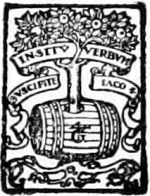Transcriber’s Notes
Obvious typographical errors have been silently corrected. Variationsin hyphenation have been standardised but all other spelling andpunctuation remains unchanged.
[Pg v]
FOREST TREES AND
FOREST SCENERY

FOREST TREES AND
FOREST SCENERY
BY
G. FREDERICK SCHWARZ
ILLUSTRATED

NEW YORK
THE GRAFTON PRESS
1901
Copyright, 1901, by
G. Frederick Schwarz
PREFACE
In the ensuing pages I have made simpleinquiries into the sources of beauty and attractivenessin American forest trees andsylvan scenery. In the concluding chapter,by way of contrast, I have given a short accountof the esthetic effects of the artificialforests of Europe. The system which shapedthese forests and gave them their present appearanceshould, however, possess more thana comparative interest for Americans. Ithas, in fact, a further connection, though aslight one, with the subject, and thereforerequires a few words of explanation.
It is well known that in many parts ofEurope the forests have long been subjectedto a systematic treatment known as forestry.The term, at first strange, is gradually becomingquite familiar to us Americans, forthe application of this comparatively newscience has already begun in many sections[Pg vi]of our country. The principles of Europeanforestry will naturally undergo many modificationsin their new environment, and thevastness of our forest areas, as well as thelong life that naturally belongs to trees, willimpose a very gradual progress. Nevertheless,the movement for a rational use of ourforests is rapidly advancing and is certainin time to find a very wide application.
Although the aims of forestry are utilitarianand not artistic, the technical characterof the operations which it involves impressesupon natural forest scenery a changedaspect. Eventually the work performed uponour forests will be manifested in a new outwardappearance, a change that cannot but be preferableto the scenes ordinarily presented byour cut-over and abandoned timberlands, andone that will be appreciated not only by forestlovers in general, but also by those who are engagedin the lumber industry itself, who areoften forced through competition and prevailingmethods to leave a desolate picture behind.
[Pg vii]
In a word, forestry interests us here because,having already obtained a foothold inour country, through it forest beauty standson the threshold of a new relationship. Thisrelationship, which is to grow more intimatewith time, appears to justify a certain discriminationin the choice of the trees andforests herein described, and an occasionalreference to some of the less technical mattersof forestry that may incidentally suggestthe